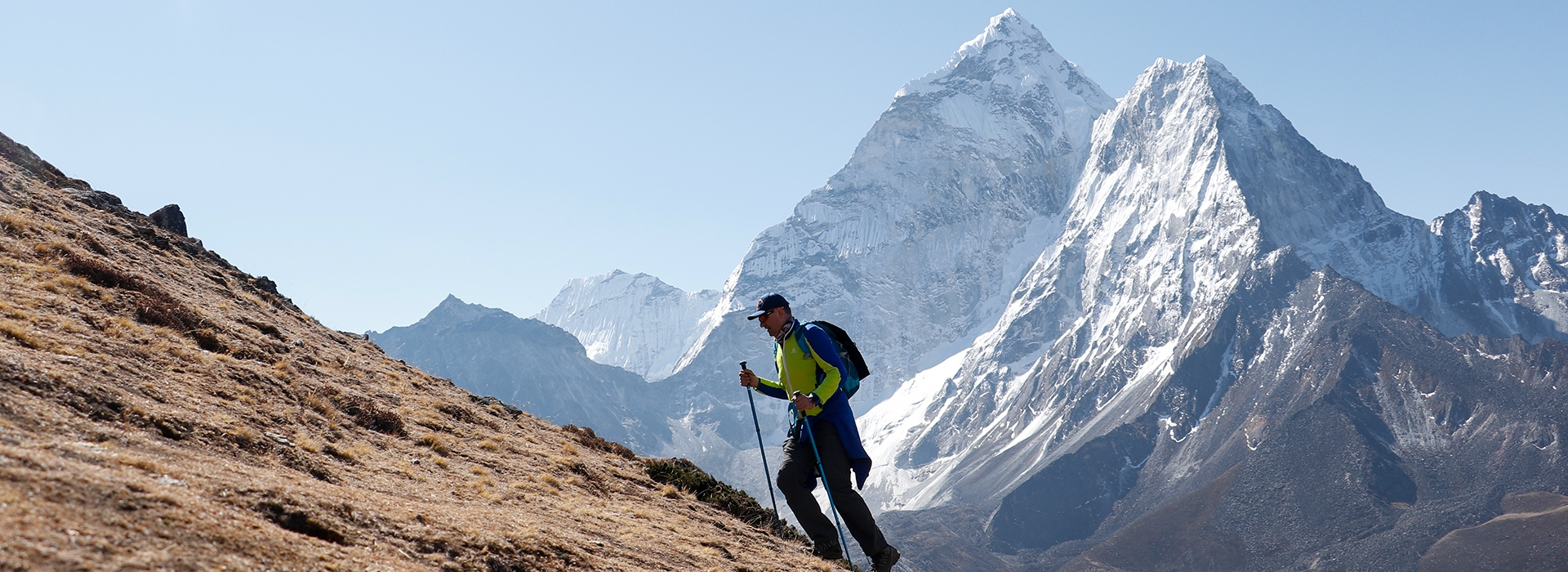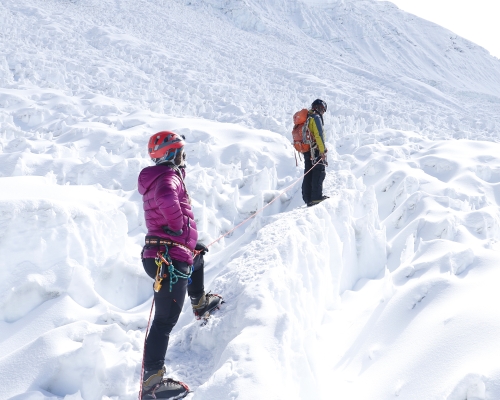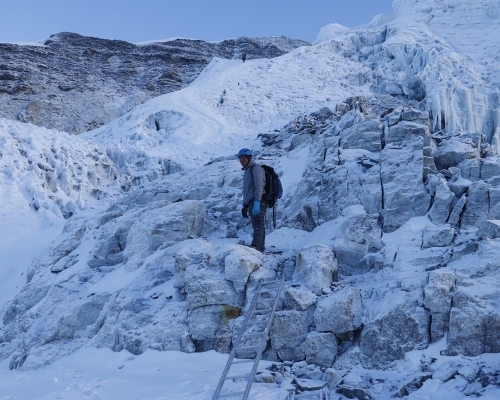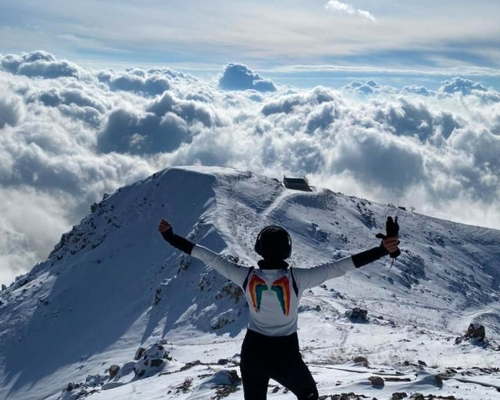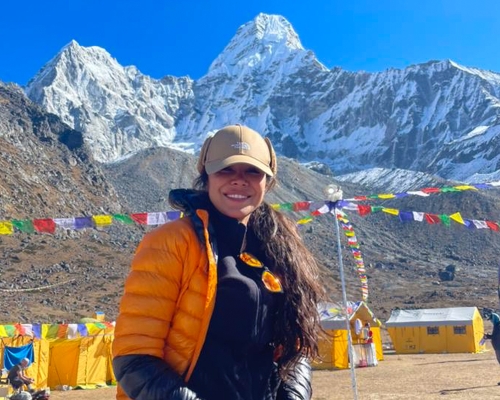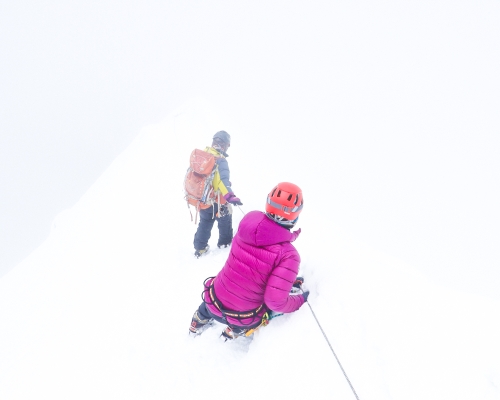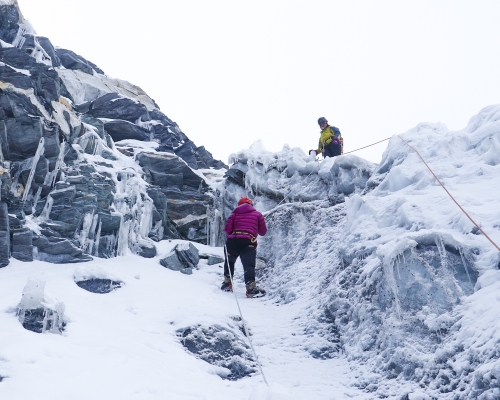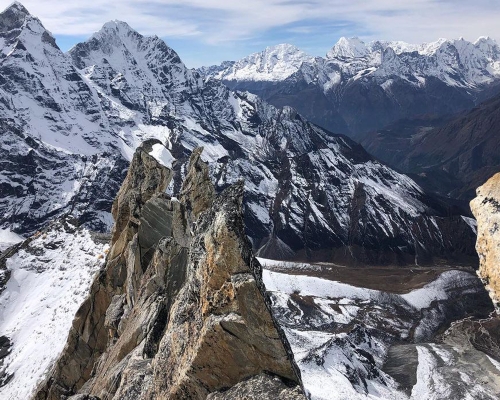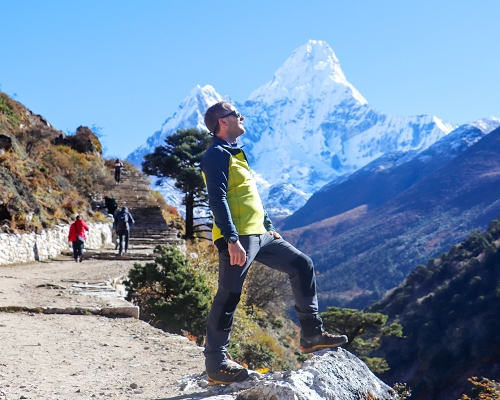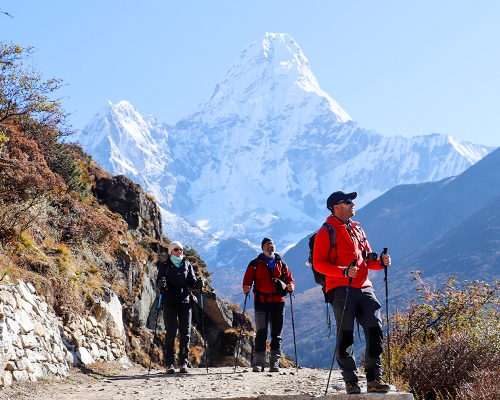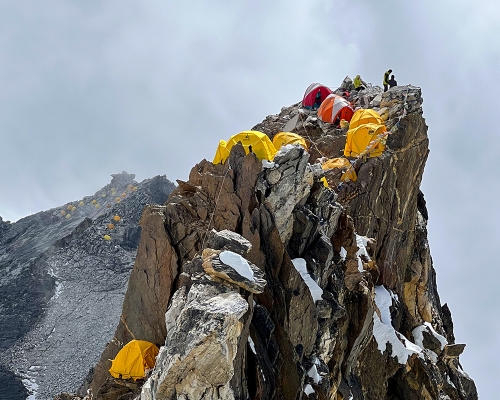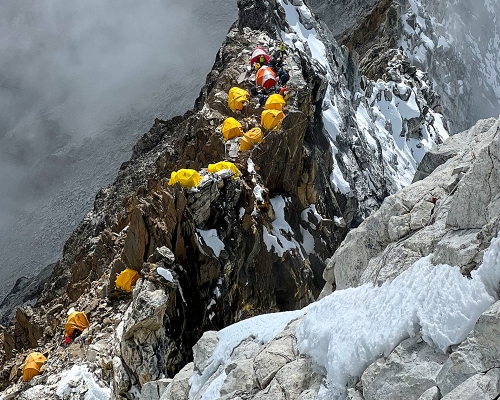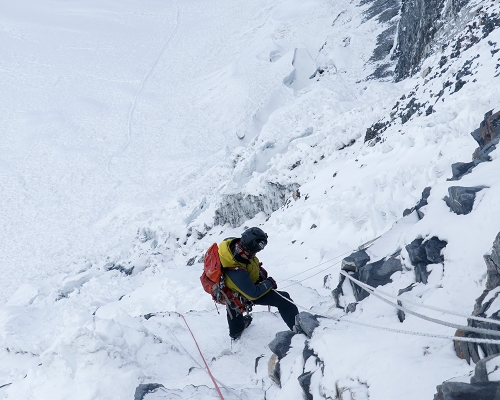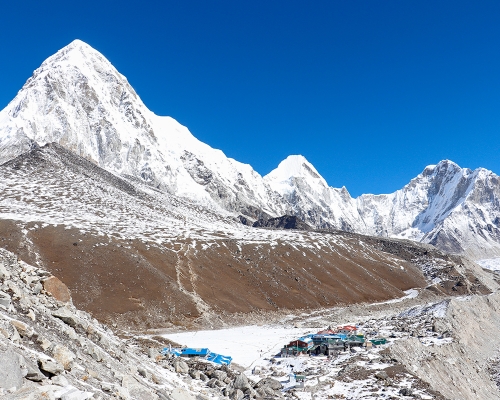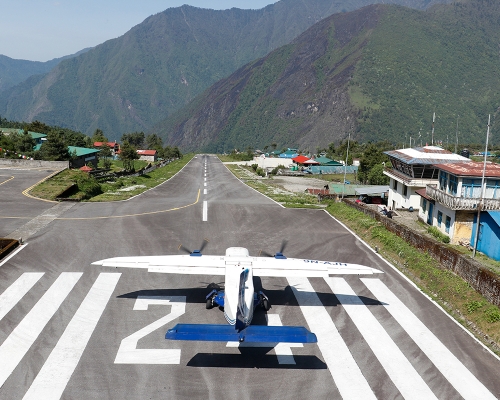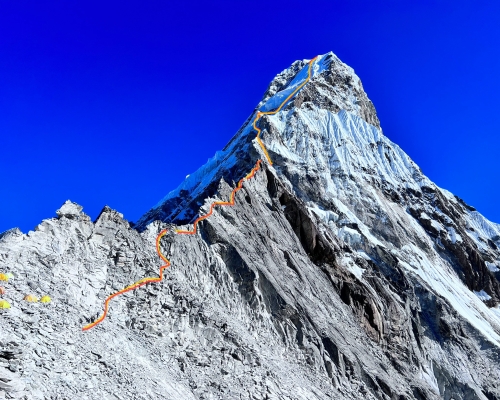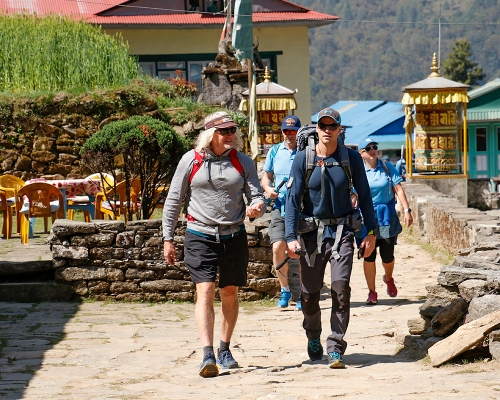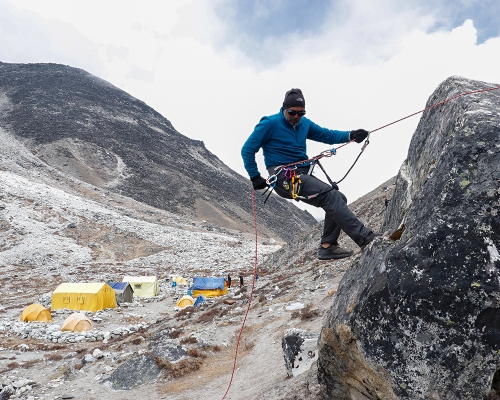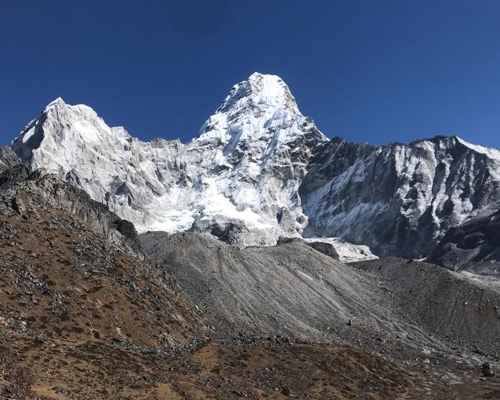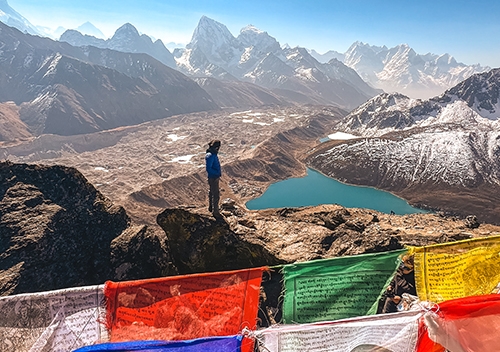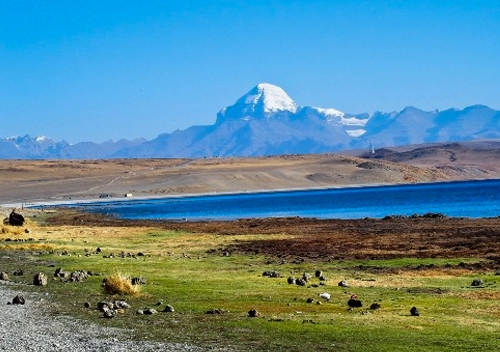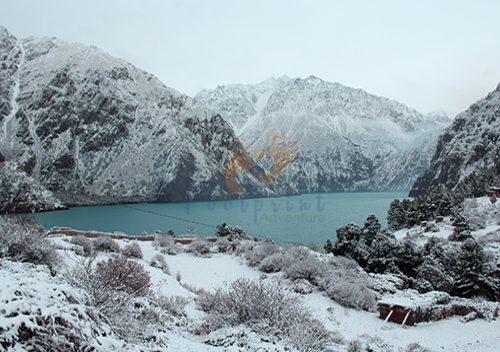Nestled in the heart of the Himalayas, Ama Dablam stands as a majestic and intimidating peak, inviting adventurers and mountaineers from around the world. Ama Dablam characterizes itself as the unique pyramid-shaped mountain in the foothills of the Himalayan Range of Eastern Nepal.
Standing at an elevation of 6,812 meters above sea level, this mountain is not popular for its height but for the aesthetics it holds. Ama Dablam, popularly known as the Matterhorn of the Himalayas is one of the most technical but gorgeous mountains in the world. The name "Ama Dablam" translates to "Mother's Necklace," reflecting the peak's unique shape that resembles a mother's embrace and the traditional double-pendant containing pictures of the gods, worn by Sherpa women.
The southwestern ridge of Ama Dablam is the popular side for the most ascension of Ama Dablam. Mike Gill, Bary Bishop, Mike Ward, and Wall Romanes were the first ones to have summited Ama Dablam in 1961 via Southwestern Ridge, one of the classic Ama Dablam Climbing Routes.
Embarking on the Ama Dablam Expedition, your journey begins in Kathmandu, a vibrant gateway to the Himalayas. After a welcome dinner with your climbing guide, you will then take on a scenic and thrilling lifetime flight to Lukla, initiating a trek through the enchanting Sherpa Settlement, Namche Bazaar. The journey intensifies as you trek to Ama Dablam Base Camp (4570 m), an important hub where preparations accelerate and technical training prepares you for the next difficulties. The surrounding landscapes of Tengboche and Pangboche can be the best backdrop for acclimatization treks, setting the base for your ascent.
The heart of the climb lies in the Southwest Ridge, its defining feature, the Yellow Tower requiring a blend of rock and ice climbing prowess. Established camps, including Camp 1 and Ama Dablam Camp 2, become essential waystations for your gradual climb, offering a break from the formidable terrain. The strategic Camp 3 becomes your launchpad for the summit push, an ascent marked by the grandeur of Everest, Lhotse, and Makalu.
After reaching the Ama Dablam Summit, your descent retraces the camp 1 and 2 respectively providing an opportunity to reflect on the challenges you've conquered. Back at the Ama Dablam Base Camp, tucked against the Himalayan background, the atmosphere feels thick with solidarity and joy.
Your expedition then comes to an end as you return to Kathmandu, leaving you with long-lasting memories of success over Ama Dablam and a strong connection to the cultural tapestry woven into the fabric of the Himalayas. The expedition, a synthesis of technical mastery, physical endurance, and cultural immersion, is a testament to your personal and communal accomplishments on the breathtaking slopes of Ama Dablam.
We have specially customized the Ama Dablam Itinerary for you to allow optimum options for building fitness and acclimatization so that you will easily be able to cope with high altitude sickness. However, this itinerary can be easily customized according to your preferences and needs. To book your Ama Dablam expedition, feel free to contact us here.
Ama Dablam Expedition Highlights
- Scenic and dramatic flight from Kathmandu to Lukla Airport,
- Acclimatize in picturesque Sherpa villages such as Namche Bazaar and Tengboche,
- Navigate the iconic Southwest Ridge, including the renowned Yellow Tower to summit Ama Dablam,
- Establish camps strategically along the ascent, including Camp 1 and Camp 2,
- Enjoy panoramic views of Everest, Lhotse, and Makalu from the summit,
- Immerse yourself in the rich Sherpa culture and hospitality,
- Engage with professional guides with extensive Himalayan experience.
Best time to Climb Ama Dablam
Spring (April to May)
Spring stands out as the Best time to Climb Ama Dablam. During this time of the year, the weather tends to be more stable, presenting climbers with clear skies and mild temperatures. These optimal conditions are instrumental in navigating the challenging technical sections of the peak. With temperatures relatively warmer compared to the winter months, spring provides a comfortable environment for climbers to conquer the various rock, ice, and snow elements of Ama Dablam. Additionally, as the season marks the end of the cold winter period, the snow and ice conditions are more stable, contributing to safer and more manageable climbing conditions.
Autumn (September to November)
Autumn is regarded as the second-best season for ascending Ama Dablam, offering its own set of advantages. During this period, the weather remains stable, with clear skies providing excellent visibility for the ascent. While temperatures in autumn are cooler than in spring, they are still favorable for climbing, ensuring that climbers can navigate the technical challenges of the peak comfortably. The autumn months are characterized by crisp weather, and the post-monsoon conditions lead to stunning views of the surrounding Himalayan peaks. Additionally, the post-monsoon period contributes to a cleaner mountain environment, reducing the risk of avalanches and enhancing overall safety during the climb.
Ama Dablam Climbing Difficulty
Climbing Ama Dablam is a strenuous and technically difficult activity, noted for the complicated mix of rock, ice, and snow characteristics of the Southwest Ridge Summit. The route contains difficult aspects such as the Yellow Tower, a remarkable rock feature that necessitates advanced rock and ice climbing abilities.
Climbers are supposed to use the fixed ropes to cross exposed and steep terrain while acclimating to high-altitude conditions. Ascending to the summit requires the strategic building of higher camps, which adds another element of complexity. Unpredictable weather conditions, such as unexpected thunderstorms and powerful winds, add tremendous challenge to the expedition. Ama Dablam Expedition requires not only physical fitness but also a high level of technical ability and experience in Himalayan mountaineering.
Fitness and Training for Ama Dablam Expedition
Preparing for the Ama Dablam Expedition demands the approach to good physical fitness and training, given the peak's unique combination of technical climbing challenges and high-altitude conditions. A strong cardiovascular foundation is very important, which can be achieved through regular cardio exercises like running, cycling, and hiking to enhance physical endurance.
Strength training is equally important, focusing on the core, legs, and upper body to build the muscular strength required for sustained climbing efforts. Technical climbing skills, including proficiency in using climbing gear and navigating rock and ice, should be honed through practical experience and, ideally, participation in climbing courses.
Acclimatization to high altitudes is a vital component of training, which includes exposure to higher elevations via treks or climbs to reduce the risk of altitude-related illnesses during the expedition.
Strength training, such as extended hikes with a loaded backpack, prepares climbers for the physical demands of long days on the mountain. Interval training, flexibility exercises, and mental conditioning contribute to a well-rounded preparation strategy.

